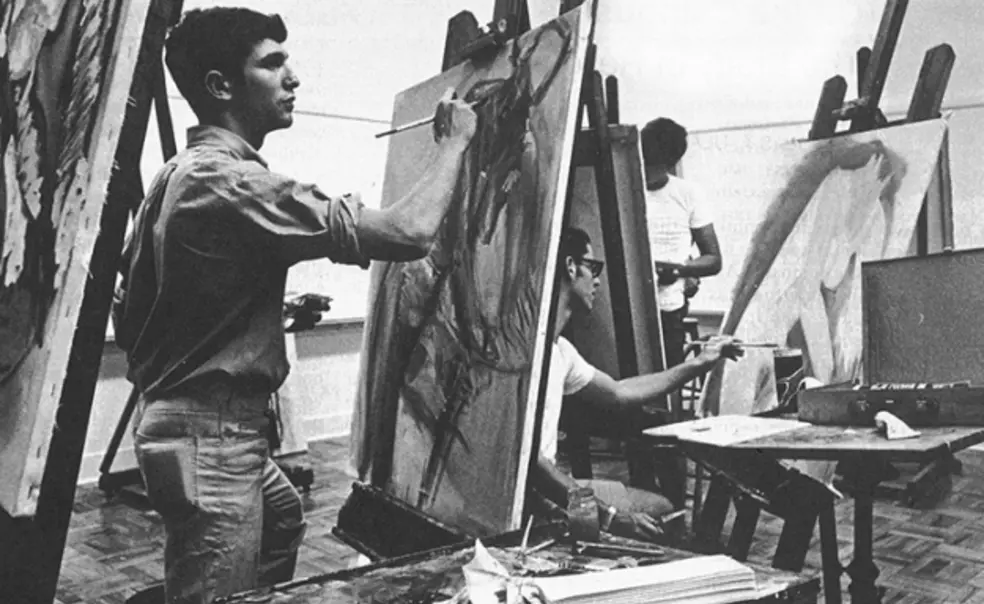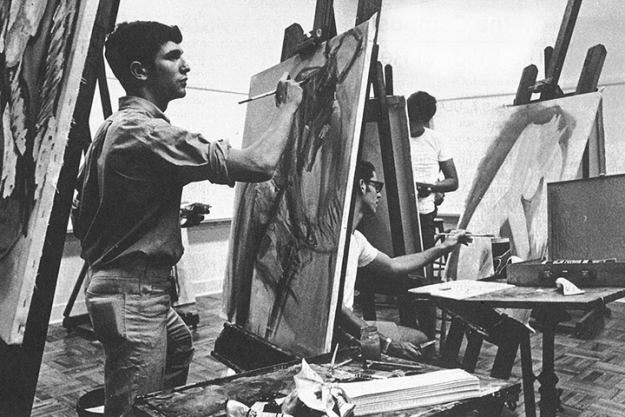#ThrowbackThursday: A Look Inside 185 Nassau, Circa 1979
Before the creation of the Lewis Center for the Arts — and before the groundbreaking for its future home, now under construction near McCarter Theatre — creativity took root at Princeton in a converted school building known simply as 185 Nassau.
A 1979 PAW article detailed the remarkable accessibility of professional artists to Princeton undergraduate students in their visual-arts classes. Sean Scully, whose work is now part of permanent collections in the Guggenheim and Smithsonian, commuted from New York to Princeton a few days a week in 1979 to advise and instruct students in painting. Scully’s instruction went far beyond canvas and brush, however, as he pushed students to confront the theoretical issues that influenced their work. Scully was one of many instructors hired on a part-time basis to allow them to continue as practicing artists with interests in contemporary art.
Program director Jim Seawright told PAW he was interested in accumulating artists with diverse points of view who were more motivated “by the challenge of working with bright students and by the freedom to try innovative teaching techniques” than by advancing their academic careers. The presence of eminent artists such as Scully encouraged students to push their creative boundaries, which resulted in the creation of unique works. “Randolph’s Field,” created by Somers Randolph ’79, began as an assignment for Alice Aycock’s advanced sculpture class and resulted in his construction of 11 outdoor structures made of rubbish.
Today at 185 Nassau, the Lewis Center includes programs in creative writing, dance, theater, and visual arts that keep the creative spirit alive and growing, with help from a new generation of faculty.












No responses yet